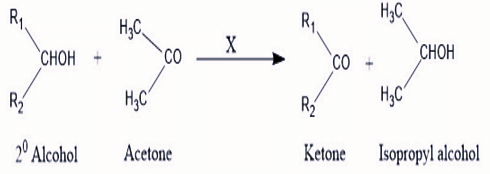Which of the following is a meta directing group?
Show Hint
- \( F \)
- \( \text{NHCH}_3 \)
- \( \text{NH}_2 \)
- \( \text{CF}_3 \)
The Correct Option is D
Solution and Explanation
A meta-directing group is an electron-withdrawing group that decreases electron density at the ortho and para positions of a benzene ring, making electrophilic substitution more likely at the meta position. Among the given options, \( \text{CF}_3 \) is a strong electron-withdrawing group due to the high electronegativity of fluorine atoms.
It exerts a -I (inductive withdrawing) effect, pulling electron density away from the benzene ring and making the ortho and para positions less reactive to electrophiles. As a result, substitution occurs at the meta position.
On the other hand: - Fluorine (F) is an electron-withdrawing group by inductive effect (-I) but has a +M (mesomeric donating) effect, making it an ortho/para director.
- Amines (NH\(_2\), NHCH\(_3\)) are strong electron-donating groups due to their +M effect (resonance donation), which increases electron density at the ortho and para positions, making them ortho/para directors.
Since CF\(_3\) is the only strong electron-withdrawing group without a significant resonance donating effect, it is the correct meta-directing group.
Top Questions on carbonyl compounds
- Which of the following are neutral?
- KEAM - 2025
- Chemistry
- carbonyl compounds
- Acetone can be converted to 2-methylpropan-2-ol using:
- KEAM - 2025
- Chemistry
- carbonyl compounds
- The correct stability order of carbocations is
- JEE Main - 2024
- Chemistry
- carbonyl compounds
- According to Oppenauer Oxidation reaction, oxidation of secondary alcohol to ketone by reagent (X) in acetone takes place, what is "X" :

- GPAT - 2024
- Organic Chemistry
- carbonyl compounds
- The Gattermann-Koch reaction is used in the industrial preparation of benzaldehyde. The electrophile involved in this reaction is
- CUET (UG) - 2024
- Chemistry
- carbonyl compounds
Questions Asked in GPAT exam
- Which of the following alkaloids are found as salts of meconic acid?
- GPAT - 2025
- Introductory Pharmacognosy
Choose the correct match of laxative and its Mechanism of Action (MOA):

- GPAT - 2025
- Laxative
Match the following:
(P) Schedule H
(Q) Schedule G
(R) Schedule P
(S) Schedule F2
Descriptions:
(I) Life period of drugs
(II) Drugs used under RMP
(III) List of Prescription Drugs
(IV) Standards for surgical dressing
- GPAT - 2025
- Drug therapy
- Which of the following is used to evaluate disinfectant?
- GPAT - 2025
- Pathogens
Match the following:
(P) Tuberculosis (1) Bacterial
(Q) Diphtheria (2) Viral
(R) Yellow fever (3) Toxoids
(S) Malaria (4) Protozoal- GPAT - 2025
- Pathogens